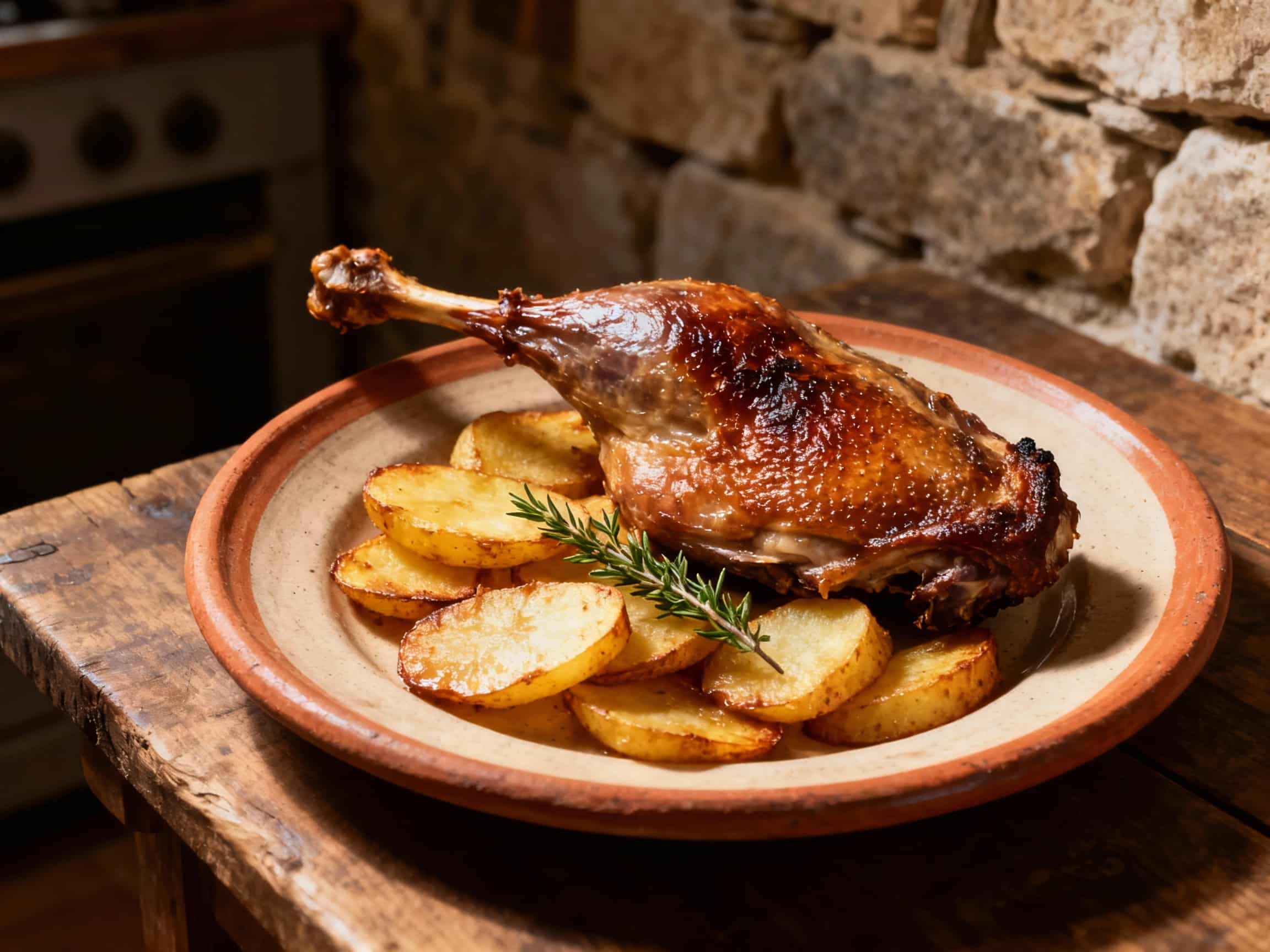
Duck Confit
Confit de canard
- Country
- France
- Region
- Southwestern France
- Recipes
- 0 Recipes
Dish information
Confit de canard, a quintessential dish from Southwestern France, is a testament to the region's rich culinary heritage and history of food preservation. The technique of "confit" – slow-cooking food in its own fat – dates back centuries, originating as a method to preserve meat before refrigeration. Duck, being abundant in the region, became the perfect candidate for this process. Traditionally, duck legs are cured with salt, herbs (like thyme and garlic), and pepper, then slowly simmered in rendered duck fat at a low temperature for several hours until exquisitely tender and infused with flavor. This results in a succulent meat that falls off the bone, with a crispy skin when later seared or baked. The Gascony region, in particular, is renowned for its exceptional confit. This dish embodies the rustic, hearty gastronomy of Southwestern France, often served simply with potatoes cooked in the same flavorful duck fat, such as pommes sarladaises. It represents a profound connection to the land and a time-honored culinary tradition.
Timeline
The technique of confit (cooking and preserving in fat) becomes established in French cuisine, particularly for meats like duck.
Confit de canard gains popularity in Southwestern France (Gascony) as a way to preserve and enhance duck.
The dish becomes a staple in rural French households and local inns.
Chef Michel Guérard's work in Nouvelle Cuisine influences the presentation and lightness of some regional dishes, though confit retains its rustic roots.
Confit de canard starts gaining wider international recognition and adoption in fine dining.
The dish is firmly established as a classic of French regional cuisine on a global scale.
Modern chefs experiment with curing techniques and accompaniments while respecting the traditional slow-cooking method.
Related recipes
0 recipesWe'll add related recipes for this dish soon.